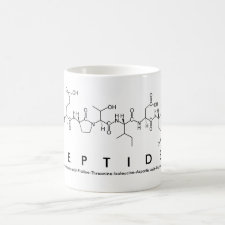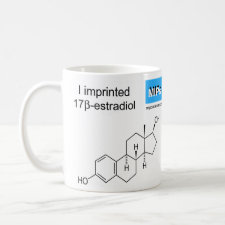
Authors: Zhu Q, Gu X, Tang J, Wang L, Feng Y, Li G
Article Title: Interaction of 17β-estradiol and its structural analogues with functional monomers.
Publication date: 2007
Journal: Journal of Beijing University of Chemical Technology (Natural Science Edition)
Volume: 34
Issue: (1)
Page numbers: 18-23.
Alternative URL: http://www.journal.buct.edu.cn/qikan/public/tjdjl_en.asp?wenjianming=20070105&houzhui=.pdf&id=15340
Abstract: The interaction of 17β-estradiol (17β-E) and its structural analogues with six different functional monomers, namely methyl methacrylate (MMA), acrylamide (AM), methacrylamide (MA), 4-vinylpyridine (4-VP), methacrylic acid (MAA) and 2-(trifluoromethyl) acrylic acid (TFMAA) has been studied by ultraviolet (UV) spectroscopy, infrared (IR) spectroscopy and high pressure liquid chromatography (HPLC), and molecularly imprinted polymers (MIP)subsequently synthesized by precipitation polymerization. The O - H and C = 0 IR absorption maxima shift towards higher wavenumbers after imprinting 17β-E on a TFMAA-co-TRIM copolymer (TRIM = trimethylolpropane trimethacrylate) with the red shift of the O- H groups being apparent after precipitation polymerization for 16 h, and that for the C = 0 groups being observed after polymerization for 24 h. The strong interaction between TFMAA and 17β-E was confirmed by the high selectivity for 17β-E, as indicated by the values of the separation factor (α) of isomers of 17β-E/17α-E (2.28) and the imprinted factor (IF) (3.01). The results show that in order to select a suitable functional monomer for fabrication of polymers selective to 17β-E and its structural analogues, preliminary screening may be carried out by monitoring the interaction between monomer and template by UV analysis; subsequently, the MIP should be synthesized, and IR and HPLC employed in order to characterize the properties of the polymer
Template and target information: 17β-estradiol, 17β-E, E2
Author keywords: 17β-estradiol, food safety, molecular recognition, Molecularly imprinted polymers, Spectral analysis



Join the Society for Molecular Imprinting

New items RSS feed
Sign-up for e-mail updates:
Choose between receiving an occasional newsletter or more frequent e-mail alerts.
Click here to go to the sign-up page.
Is your name elemental or peptidic? Enter your name and find out by clicking either of the buttons below!
Other products you may like:
 MIPdatabase
MIPdatabase









